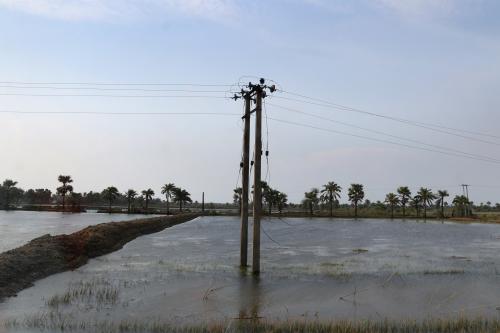Every government, throughout history, has been practicing some form of industrial policy—public policies aimed at stimulating industrial growth and, ultimately, the transformation of the economy from low-productivity agriculture to high-productivity manufacturing and services. Unfortunately, the results have been disappointing, especially in some of the poorest regions of the world. India, despite rapid overall growth, has seen little employment growth in the formal manufacturing sector. In sub-Saharan Africa, the ratio of manufacturing value added to GDP is lower today than it was in the 1970s. And in the Middle East and North Africa (MENA), almost all the job growth is in tiny (one-person), young firms. In Tunisia, for example, these startups account for 95 percent of job growth. But these firms rarely grow. Ten years later, 95 percent of them are either still one-person firms or have gone out of business.
Three possible answers to what’s going wrong
i) Existing distortions. The analytical case for industrial policies is based on the idea that there is a market failure that is preventing industrialization and so some form of government intervention, such as a subsidy, is necessary to correct that failure. The case is usually made in the form of elegant economic models that portray the market failure and show how intervention can lead the economy to higher growth. Most of these models assume that the relevant market failure is the only distortion in the economy. In the real world, however, these economies are full of distortions, such as labor market regulations, energy subsidies, and the like. In this setting, correcting the market failure associated with industrial policy may not promote industrialization; in fact, it may make matters worse. This point is nothing more than the classic problem of the “second-best” in welfare economics. (e.g. Promoting competition in an industry with a polluting monopolist may increase pollution.) India’s IT sector, for instance, could be seen as a source of comparative advantage (and therefore worthy of targeted industrial policy), but the fact is that this sector grew because the manufacturing sector was constrained by labor regulations and poor infrastructure. Similarly, energy subsidies in MENA distort the pattern of potentially lucrative industries in favor of energy-intensive ones that do not take advantage of the country’s other endowments, such as skilled labor. Instead of relying on simple models that assume away all other distortions, governments would do better to identify the biggest distortions in the economy (such as energy subsidies) and work on correcting them. And if the biggest distortion cannot be moved, then governments need to take that into account in identifying the next biggest distortion to be addressed.
ii) Political capture. Besides the analytical problem, a common issue is that industrial policies are too easily captured by politically powerful groups who then manipulate it for their own purposes rather than for structural transformation. There is considerable evidence that certain sectors in Tunisia—banking, telecommunications, and transport—received protection from domestic and foreign competition because the former President Ben Ali’s family had business interests in these sectors. The “Ben Ali firms,” which accounted for 1 percent of private-sector output and 3 percent of employment, had 21 percent of the profits in the economy. The monopoly power granted to these sectors raised prices to the point that Tunisia’s exporting sector was no longer competitive. Since this problem is found around the world, the question to be asked before introducing an industrial policy is: “what will prevent this policy from being captured?” One way of reducing the risk of political capture is to publicize the link between cronyism and employment, so that citizens can put pressure on politicians to deliver on their promises.
iii) Firms not sectors. Industrial policy has typically targeted sectors. The discussion of “picking winners,” based on some variant of comparative advantage, is usually about which sectors should receive preferential treatment. But sectors don’t trade; firms do. The reason we traditionally focused on sectors is that we didn’t have sufficiently detailed firm-level data in developing countries. Now that the situation is improving, we are finding a great deal of heterogeneity among firms within a sector. In particular, in sectors without an obvious comparative advantage, there are highly successful exporting firms and some unsuccessful ones. These observations have led to research on the characteristics of successful firms (such as the quality of management) and the possibility that industrial policy would be more effective if it targeted these characteristics rather than all firms in a sector. In addition, certain policies such as phytosanitary regulations, may have a differential effect within a sector, enabling some “stars” to emerge, while others close down. Finally, some economy-wide policies, such as exchange rates, that were thought to have uniform effects on a sector, may have differential effects once firm characteristics are taken into account.



Commentary
Three reasons why industrial policy fails
January 14, 2016